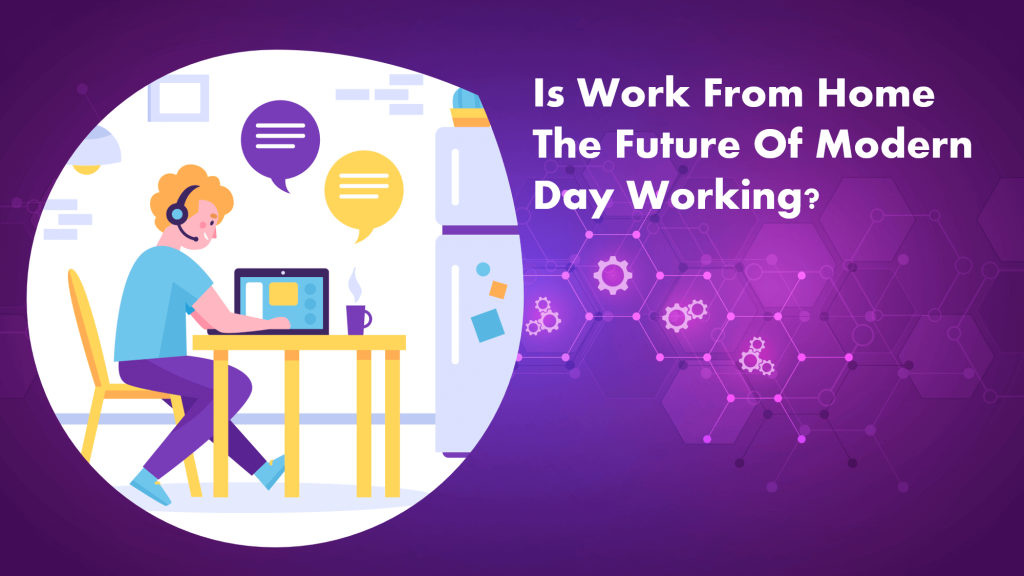Companies are Now Moving to Remote Work Permanently

In the past two years, there has been a major shift in the business world where more people are working from home instead of the traditional office setting of the recent past.
Whether you work in marketing, sales rep of a company, or compile NFL stats, you may have seen this same type of shift and might be wondering when things will return to normal.
More than likely, this trend is not going anywhere any time soon. Working from home is here to stay, and not just because there is a pandemic happening. The shift has happened and it is here to stay.
Offices Not Necessary
The initial shift from office settings to home was forced by the COVID-19 pandemic, but when you take a deep into the need to expand business activity without corresponding higher cost of operation, then it’s hightime the traditional office setting is reorganized.
With the increased performance of technology and secure cloud-based systems, it was only a matter of time before businesses started trying to off-site their day-to-day business operations.
The use of technology like Facetime, Zoom, and other video conferencing applications makes meetings just as productive, if not more, than doing them in person.
Cloud-based systems of data sharing and organizing make interoffice sharing of documents possible from anywhere around the world, opening up new markets and larger employee pools.
These bigger employee pools and new market options allow businesses to expand and find the right people to impact their business for the positive.
But also from a business standpoint, businesses are using this new model to lower their need for physical assets, allowing them to invest more money into the workings of their business instead of into physical office buildings and added expenses of those buildings.
Even companies as big as State Farm Insurance Company are downsizing the need for office infrastructural facilities in exchange for the conversion of their employees to remote workers.
Large office complexes like theirs in Bloomington, Illinois will be downsized for savings which will allow them to reinvest money into their product and hire more employees to work from home.
Freeing the Daily Employee
The increased amount of remote employment has changed the daily look of a workday for employees that would typically be working in an office building setting.
There are many advantages for both the business owners and the employees fo adopting this model of employment.
Employees no longer have to commute to their offices, saving them the gas expenses on cars, allowing for more rest, and giving them the comfortability of their own homes.
These may sound minuscule as a factor, but to the daily employee, these are added freedoms that make life simpler and comfortable.
Employees also have the freedom to work and manage their personal lives, as remote employment allows them to work with flexibility.
Workers who have sick spouse or kids would no longer need to call off work to take care of their loved ones or make last-minute arrangements for a caretaker when little Suzy wakes up sick and can’t go to school.
This has upside for both employer and employee. The business is not losing much production from an employee and the employee is not burning up a sick day or PTO day to attend to a personal matter.
Studies, even before the COVID-19 pandemic, were showing that remote workers were between seven and 15 percent more productive from the comfort of their own homes than in an office setting.
That shows the self-motivation of good employees and those are the employees that will thrive in the new remote employment atmosphere.
The Pitfalls
Naturally, there are going to be some employees that try to take advantage of businesses by slacking off and doing the bare minimum amount of work to receive a paycheck.
But with the technological systems that businesses can use to monitor employee productivity, this is a pitfall that should be able to be avoided and keep the remote employee model from crumbling.
The turnover rate in remote employment will probably be extremely high for some time as employees try to find jobs that they find satisfying and fulfilling.
Businesses will also tend to have shorter trial periods for employees who aren’t fitting into the model of employment.
This will stem from a lack of personal interaction and the real-life application of having skin in the business.
The culture of a business may be harder to cultivate due to the lack of personal connection between employees and those who run the business.
Loyalty will also come at a premium, as it will be easier to terminate employment from both businesses and workers with a simple email.
The Future
The business world will always continue to shift and change with the times, but it is entering a whole new era of the day-to-day operations of the business itself.
Businesses and employees need to know the ups and downs of this new model and expect changes.
They need to be ready to pivot at a moment’s notice, but it seems that the at-home model of business is here to stay.




